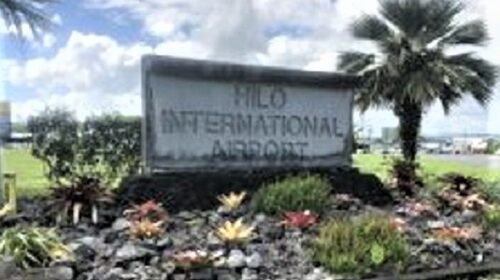Code Orange Alert for Hawaii after Volcano Kīlauea Eruption
The recent eruption by the Kilauea Volcano on the Island of Hawaii is no direct threat to villages or populated areas in Hawaii, but it is a concern for vog conditions and poor air quality. USGS issued a code Orange Alert for the State of Hawaii.
The U.S. National Park Service updates information for visitors.
The Hawaiʻi Department of Health (DOH) advises the public to be prepared for air quality impacts due to the recent Kīlauea eruption. As of Sunday, September 10, 2023, permanent air quality monitoring stations across the state report that air quality levels are elevated at the Ocean View and Pāhala air quality monitoring stations. The eruption has caused vog conditions to return to the west side of Hawaiʻi Island. Particulates in the air and levels of sulfur dioxide may increase and fluctuate in various localized areas on Hawai‘i Island, causing poor air quality.
Hawai‘i residents and visitors are advised to be prepared for and aware of the surrounding conditions, and how they may react to poor air quality or vog. In the event of voggy conditions, the following precautionary measures are advised:
- Reduce outdoor activities that cause heavy breathing. Avoiding outdoor activity and exercise during vog conditions can reduce exposure and minimize health risks. This is especially important for sensitive groups, such as children, the elderly, and individuals with pre-existing respiratory conditions including asthma, bronchitis, emphysema, and chronic lung and heart disease.
- People with asthma or other chronic respiratory disease should always have medications available. Daily prescribed medications should be taken on schedule.
- People experiencing health effects should contact their medical provider as soon as possible if any symptoms develop, as respiratory conditions might worsen rapidly in heavy sulfur dioxide or vog conditions.
- Stay indoors and close windows and doors. If an air conditioner is used, set it to recirculate. If you need to move out of an impacted area, turn on the car’s air conditioner and set it to recirculate.
- Face masks (surgical, cloth, KF94, KN95, N95) do not provide protection from sulfur dioxide or vog. However, they can be effective in outdoor environments in reducing inhaled hazardous particulates associated with falling ash and Pele’s hair.
- Do not smoke and avoid second-hand smoke.
- Drink plenty of fluids to avoid dehydration.
The Kīlauea summit eruption that began yesterday at 3:15 p.m., September 10th, continues this morning. Eruptive activity is confined to the downdropped block and Halemaʻumaʻu crater within Kīlauea’s summit caldera. No unusual activity has been noted along Kīlauea’s East Rift Zone or Southwest Rift Zone.
Halemaʻumaʻu Lava Lake Observations: Multiple minor fountains remain active in the eastern portion of Halema‘uma‘u crater floor and on the down-dropped block within Kīlauea’s summit caldera. The line of vents stretches approximately 0.8 miles (1.4 km), from the eastern part of Halema‘uma‘u crater floor extending into the east wall of the down-dropped block. Effusion rates appear down from the initial eruptive rate but remain high. Lava fountain heights have decreased since the eruption onset, but remain up to about 10-15 meters (32-50 feet) high this morning. Lava erupted from fissures on the downdropped block is flowing in a westward direction towards Halema‘uma‘u crater, covering much of the surface with active lava. The laser rangefinder is aimed at a western portion of Halema‘uma‘u crater.
Summit Observations: Summit tilt has remained deflationary over the past 24 hours. Summit seismic activity is dominated by eruptive tremor (a signal associated with fluid movement). Volcanic gas emissions in the eruption area are elevated; between 4 and 5 p.m. yesterday, HVO staff measured preliminary sulfur dioxide (SO2) emission rates of up to 100,000 tonnes per day or more. Emission rates appear to be lower this morning, but have not been confirmed by addtional measurments at this time.
Rift Zone Observations: No unusual activity has been noted along the East Rift Zone or Southwest Rift Zone; steady rates of ground deformation and seismicity continue along both. Measurements from continuous gas monitoring stations downwind of Puʻuʻōʻō in the middle East Rift Zone—the site of 1983–2018 eruptive activity—remain below detection limits for SO2, indicating that SO2 emissions from Puʻuʻōʻō are negligible.
Hazard Analysis: Eruptive activity is occurring on the downdropped block and Halemaʻumaʻu crater, within Kīlauea’s summit caldera and in the closed area of Hawaiʻi Volcanoes National Park. During Kīlauea summit eruptions, the high level of volcanic gases—primarily water vapor (H2O), carbon dioxide (CO2), and sulfur dioxide (SO2)—being emitted is the primary hazard of concern, as this hazard can have far-reaching effects downwind. As SO2 is released from the summit, it reacts in the atmosphere to create the visible haze known as vog (volcanic smog) that has been observed downwind of Kīlauea. Vog creates the potential for airborne health hazards to residents and visitors, damages agricultural crops and other plants, and affects livestock.
For more information on gas hazards at the summit of Kīlauea, please see: https://pubs.er.usgs.gov/publication/fs20173017. Vog information can be found at https://vog.ivhhn.org.
Other significant hazards also remain around Kīlauea’s summit from Halemaʻumaʻu crater wall instability, ground cracking, and rockfalls that can be enhanced by earthquakes within the area closed to the public. This underscores the extremely hazardous nature of the rim surrounding Halemaʻumaʻu crater, an area that has been closed to the public since early 2008.
Vog and air quality updates are available through the:
SOURCE: Code Orange Alert for Hawaii after Volcano Kīlauea Eruption




